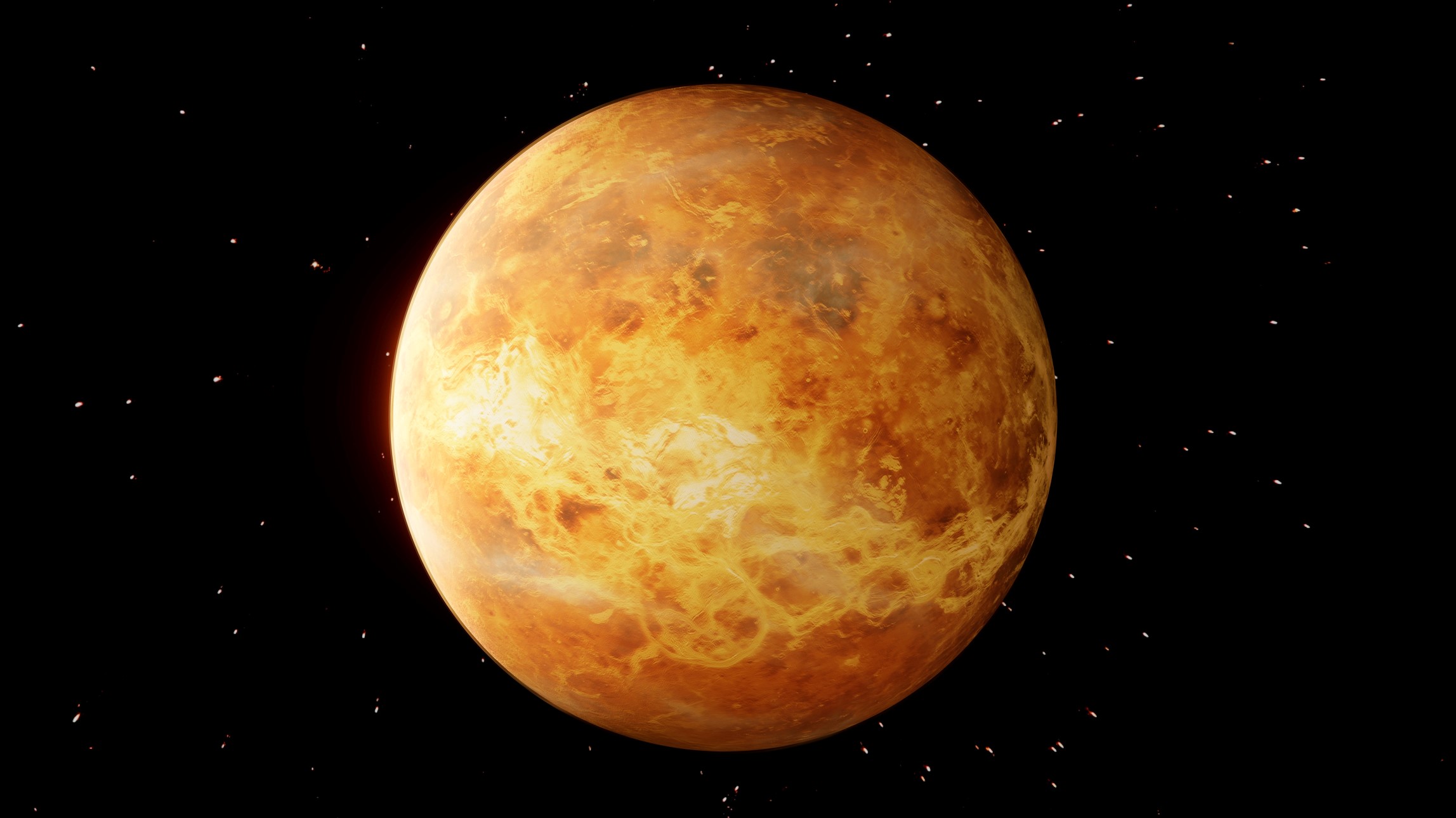
A computer-simulated view of Venus based on Magellan spacecraft data. (Photo: NASA)
Researchers Explore the Possibility of Ice Formation in Venusian Skies
Recently, a new study published in the journal Advancing Earth and Space Sciences raised new questions about Venus’s atmosphere. Recent research questions what we thought we knew about the planet’s environment by suggesting that thin ice clouds could form high above its hellish surface.
According to the findings, both water and carbon dioxide may condense into ice particles within the Venusian atmosphere, potentially aiding the planet in retaining its water. This revelation comes amidst the notorious reputation of Venus as the hottest planet in the solar system, with surface temperatures reaching a staggering 867 degrees Fahrenheit.
Computer simulations indicate that temperatures as low as minus 298 degrees Fahrenheit, roughly 75 miles above the planet’s surface, could lead to the condensation of liquid water into nanosize crystals of water ice. These crystals could then coalesce on smoke particles in the Venusian skies, forming the foundation for the emergence of larger cloud formations.
READ ALSO: China Launches Einstein Probe With ‘Lobster Eyes’ X-Ray Telescope Into Orbit
The study suggests that the upper mesosphere of Venus’ atmosphere may become “supersaturated” with both amorphous solid water and crystalline carbon dioxide ice, potentially resulting in the formation of fleeting carbon dioxide ice clouds. These so-called Venusian mesospheric clouds could act as a “cold trap” and aid in redistributing smoke particles throughout the planet’s atmosphere.
While the presence of these ice clouds may offer a new perspective on Venus, their detection remains a challenge due to their short lifetime. Nevertheless, if confirmed, they could provide valuable insights into the dynamics of Venus’ atmosphere and its potential implications for the planet’s water content. This study opens up new avenues for understanding the complexities of planetary atmospheres beyond Earth.
READ ALSO: James Webb Space Telescope Captures Mystifying ‘Green Monster’ Residue In Stunning Supernova Remnant




![Tyson Foods Plant [Photo: Food Manufacturing]](https://southarkansassun.com/wp-content/uploads/2023/08/iStock_1185520857__1_.5e441daa51cca-600x337.jpg)








![Silverado Senior Living Management Inc. [Photo: Los Angeles Times]](https://southarkansassun.com/wp-content/uploads/2023/10/download-6-4-600x337.jpg)

![China's Wuhan Institute of Virology [Photo: Nature]](https://southarkansassun.com/wp-content/uploads/2023/09/d41586-021-01529-3_19239608-600x337.jpg)















